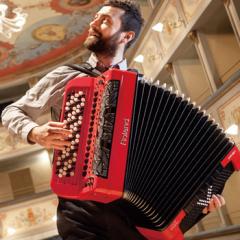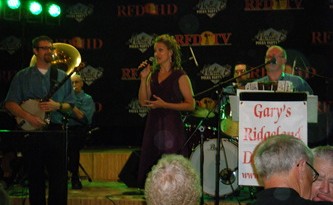All about the accordion
June is Accordion Awareness Month, and this article looks at the German musical invention.
What is an accordion?
Accordions are a family of box-shaped musical instruments of the bellows-driven free-reed aerophone type.
Colloquially referred to as a squeezebox, the name ‘accordion’ comes from the 19th century German ‘akkordeon’, with ‘akkord’ meaning “musical chord.”
The accordion is widely spread across the world. In some countries it is used in popular music, whereas in others it tends to be heard more in dance-pop and folk music. The accordion is also used in cajun, zydeco, jazz music, and in both solo and orchestra performances of classical music.
Accordions have many configurations and types. Some are bisonoric, producing different pitches depending on the direction of bellows movement, while others are unisonoric, meaning they produce the same pitch in both directions.
Some accordions use a chromatic buttonboard for the right-hand manual, while others use a diatonic buttonboard for the right-hand manual. There are also popular models with a piano-style musical keyboard for the right-hand manual. It is also possible to get an accordion that can play in different registers.
While there are all these variations, for an accordion to be an accordion there are three universal components.
First up it’s the bellows – arguably the most recognisable part of a squeezebox. The bellows is located between the right- and left-hand manuals, and is made from pleated layers of cloth and cardboard, with added leather and metal. It is used to create pressure and vacuum, driving air across the internal reeds and producing sound by their vibration, applied pressure increasing the volume.
Another universal component is the body, which consists of two wood boxes joined together by the bellows. These boxes house reed chambers for the right- and left-hand manuals, respectively. Each side has grilles in order to facilitate the transmission of air in and out of the instrument, and to allow the sound to better project.
The final part of every accordion is the pallet. Seeing as the instrument is an aerophone – meaning it produces sound primarily by causing a body of air to vibrate without the use of strings or membranes – the pallet mechanism is there to either enable air flow or to disable it. As a key is pressed down, the pallet is lifted, allowing for air to enter the tone chamber in either direction and excite the reeds.
Fun fact: The piano accordion is the official city instrument of San Francisco, CA.
How do you play it and what does it sound like?
An accordion played by compressing or expanding the bellows while pressing buttons or keys, causing the pallets to open and allowing air to flow across brass or steel reeds. These vibrate to produce sound inside the body. The performer normally plays the melody on buttons or keys on the right-hand manual, and the accompaniment, consisting of bass and pre-set chord buttons, on the left-hand manual.
While you might think accordions are quite a niche instrument, they are actually used in many different types of music around the globe, including traditional, folk, and pop music in Europe, Bosnia and Herzegovina, Brazil, Colombia, and Mexico. There is even an increase in popularity in heavy metal music featuring accordions in Scandinavia!
As well as all this, the accordion has grown in popularity among classical composers.
Invented in 1829, the accordion has had quite a while to make its way around the musical world.




